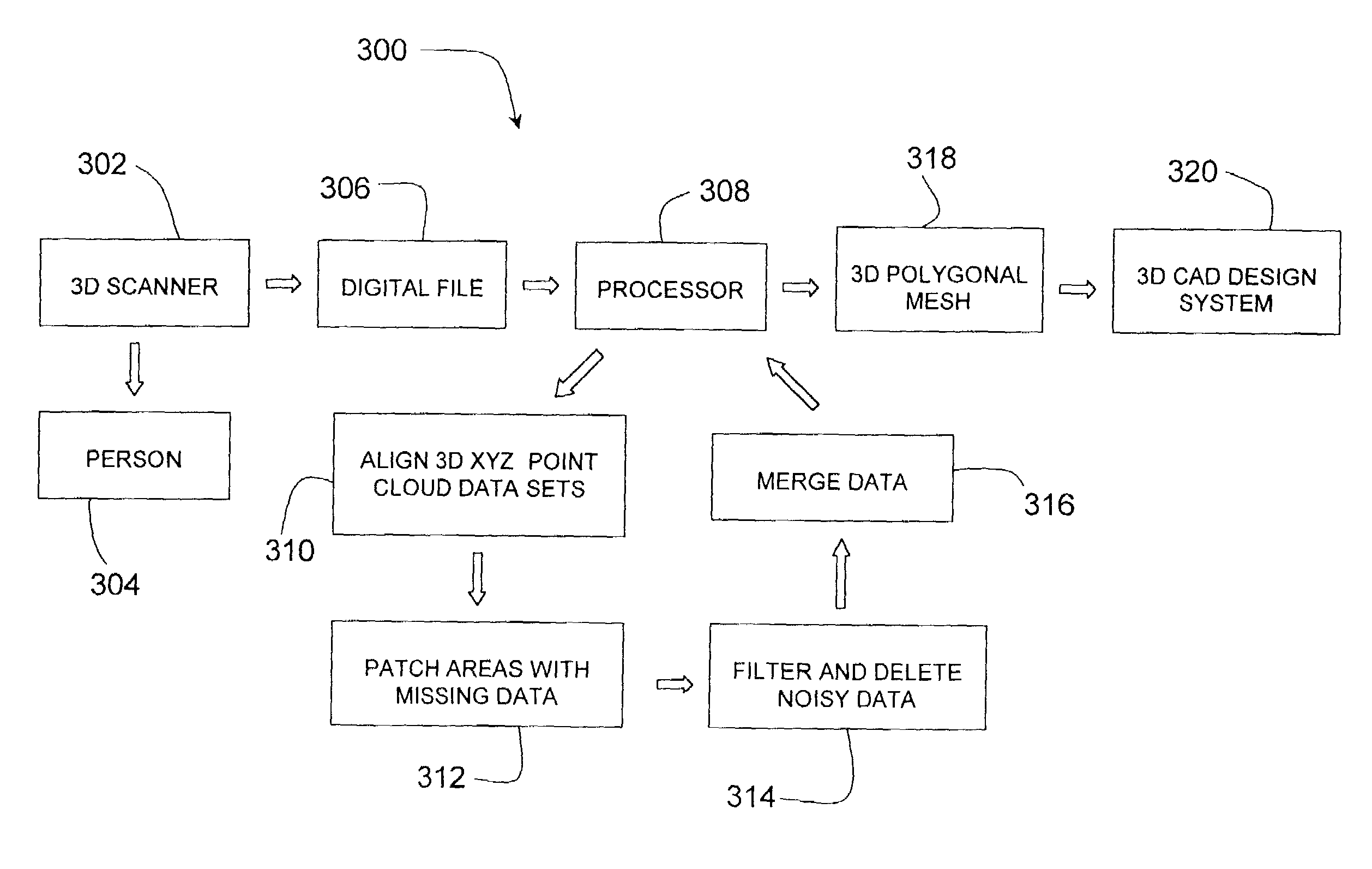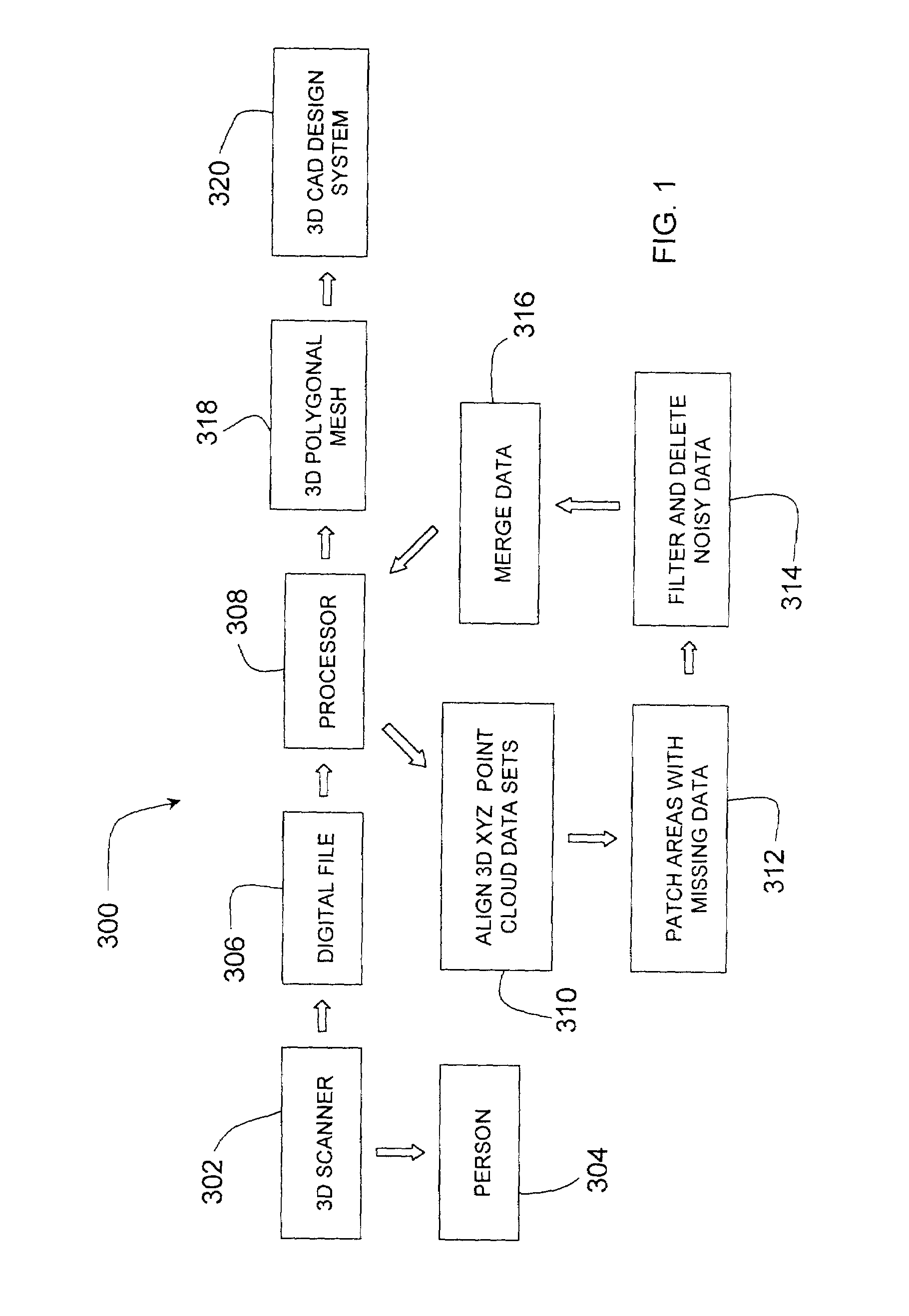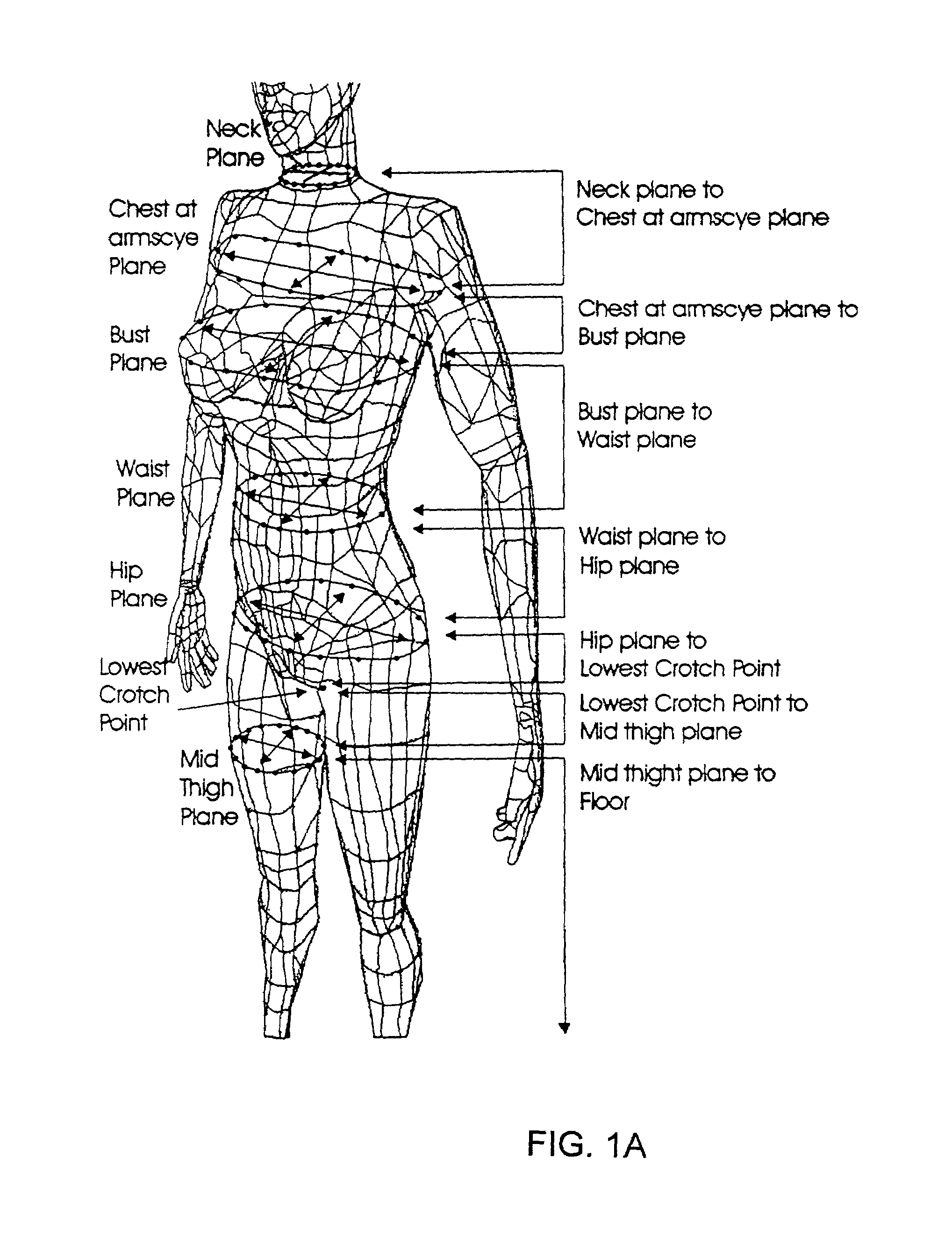System and method for three-dimensional shape and size measurement
a three-dimensional shape and measurement system technology, applied in the field of measuring systems, can solve the problems of inability to describe the shape of the hip girth, the shape of the girth and arc the inability to define the shape of the measurement unit,
- Summary
- Abstract
- Description
- Claims
- Application Information
AI Technical Summary
Benefits of technology
Problems solved by technology
Method used
Image
Examples
Embodiment Construction
[0060]As is the case with many inventions, the present invention for a system and method for three-dimensional shape and size measurement is subject to a wide variety of embodiments. However, to ensure that one skilled in the art will be able to understand and, in appropriate cases, practice the present invention, certain preferred embodiments of the broader invention revealed herein are described below and shown in the accompanying drawing figures.
[0061]As one will appreciate from reviewing this disclosure, the present invention can make 3D full body scanning technology readily accessible to consumers in numerous locations including, by way of example, their local shopping areas. Looking more particularly to the drawings, an overview of an embodiment of the present system for three-dimensional shape and size measurement is indicated at 300 in FIG. 1. There, one sees that by use of a 3D full body scanner 302, a person 304 can be scanned in, for example, his or her undergarments and ...
PUM
 Login to View More
Login to View More Abstract
Description
Claims
Application Information
 Login to View More
Login to View More - R&D
- Intellectual Property
- Life Sciences
- Materials
- Tech Scout
- Unparalleled Data Quality
- Higher Quality Content
- 60% Fewer Hallucinations
Browse by: Latest US Patents, China's latest patents, Technical Efficacy Thesaurus, Application Domain, Technology Topic, Popular Technical Reports.
© 2025 PatSnap. All rights reserved.Legal|Privacy policy|Modern Slavery Act Transparency Statement|Sitemap|About US| Contact US: help@patsnap.com



